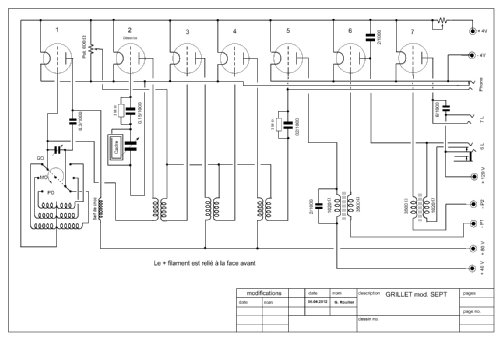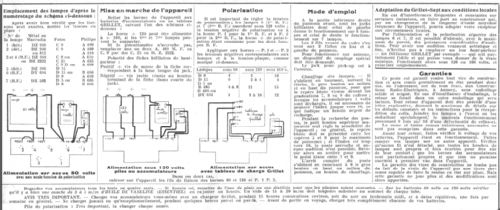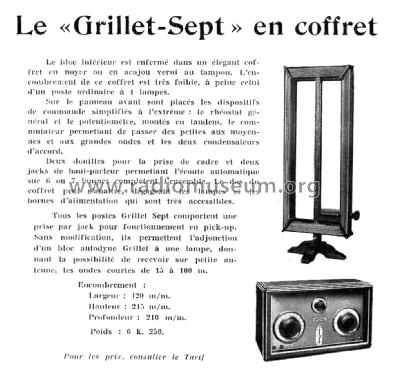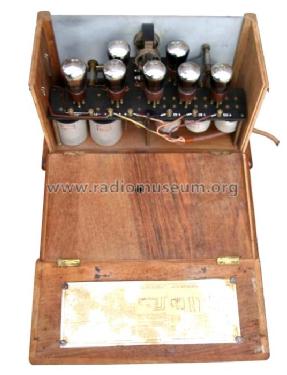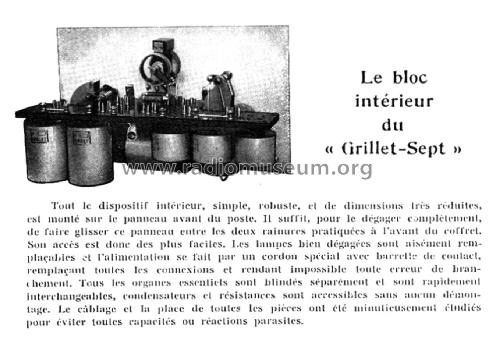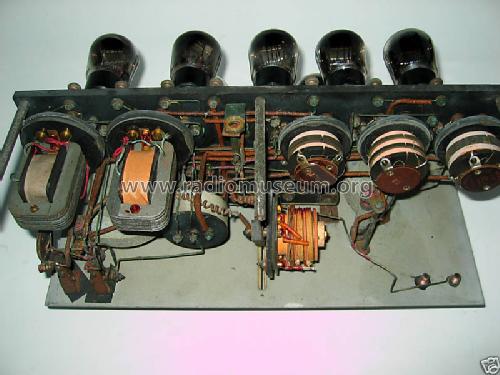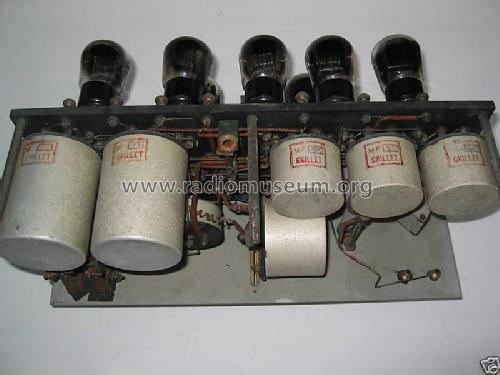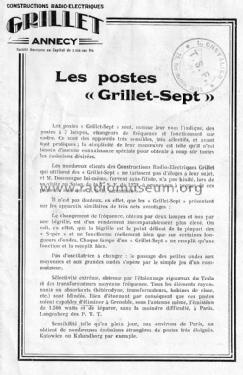- Country
- France
- Manufacturer / Brand
- Grillet, F., J. Béné (voir aussi Radio-Annécia), Zuccolo-Rochet et Cie.; Annecy
- Year
- 1928
- Category
- Broadcast Receiver - or past WW2 Tuner
- Radiomuseum.org ID
- 70835
Click on the schematic thumbnail to request the schematic as a free document.
- Number of Tubes
- 7
- Main principle
- Superheterodyne (common)
- Wave bands
- Broadcast (MW) and Long Wave.
- Power type and voltage
- Storage and/or dry batteries / 4 & 40 & 80 & 120 Volt
- Loudspeaker
- - This model requires external speaker(s).
- Material
- Wooden case
- from Radiomuseum.org
- Model: Grillet-Sept - Grillet, F., J. Béné voir
- Shape
- Tablemodel, Box - most often with Lid (NOT slant panel).
- Dimensions (WHD)
- 420 x 215 x 210 mm / 16.5 x 8.5 x 8.3 inch
- Notes
-
Poste à 7 lampes intérieures, fonctionnant sur cadre. Superhétérodyne à système Ultradyne (voir text en anglais), détection grid-leak.
Les étages finales BF peuvent aussi être employés à tension réduite de 80 au lieu de 120 volts. Une batterie "C" pour la polarisation des deux lampes finales BF est toujours nécessaire. La tension dépend de la tension appliquée aux anodes et de les lampes utilisées. Exemple de batterie.
Deux prises HP pour l'audition automatique sur 6 ou 7 lampes (jeux des lampes alternatives voir documentation). Prise pick-up.
Possibilité d'adjonction d'un Bloc Autodyne pour la réception des OC de 15 a 100 m, sans modification, sur petite antenne.
Coffret en noyer ou acajou verni au tampon.
Voir aussi modèles Grillet-Sept No. 7 en coffret traditionel et Grillet-Sept version luxe.
Ultradyne principle. The Ultradyne circuit was invented by Robert E. Lacault and was first marketed by the Phenix Radio Corporation in February 1924.
Excerpt from an internet source:
"The Ultradyne was touted to be an improvement over the standard 1920s superheterodyne circuit. Instead of injecting the oscillator signal into the grid circuit of the first detector, as was the standard practice at the time, the Ultradyne principle used the oscillator to modulate the plate of the first detector. The modulation method is somewhat unusual and some people assume there is a wiring error at a first glance of the schematic diagram. The plate of the first detector did not obtain its voltage directly from the B+ supply; it obtains its voltage from the grid of the oscillator tube (through the primary of the first IF transformer)."
- Net weight (2.2 lb = 1 kg)
- 6.250 kg / 13 lb 12.3 oz (13.767 lb)
- Price in first year of sale
- 1,500.00 FRF
- Mentioned in
- Radios von gestern, 2. Auflage
- Literature/Schematics (1)
- - - Manufacturers Literature
- Literature/Schematics (3)
- Le Journal de Fourmies, 01.12.1928
- Literature/Schematics (4)
- -- Original prospect or advert (Dépliant Grillet)
- Other Models
-
Here you find 27 models, 22 with images and 5 with schematics for wireless sets etc. In French: TSF for Télégraphie sans fil.
All listed radios etc. from Grillet, F., J. Béné (voir aussi Radio-Annécia), Zuccolo-Rochet et Cie.; Annecy
Collections
The model Grillet-Sept is part of the collections of the following members.
